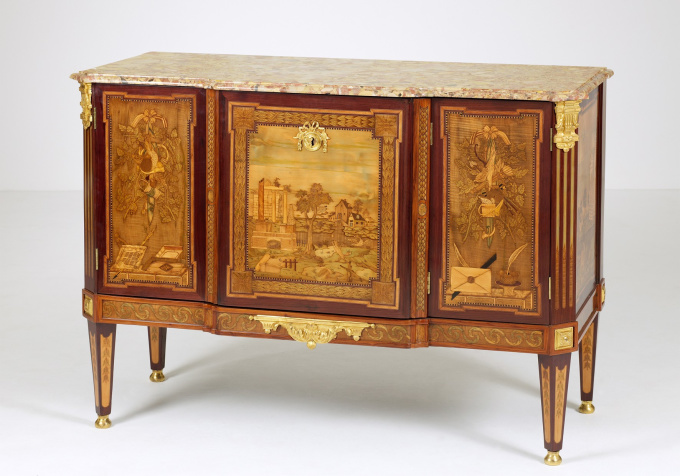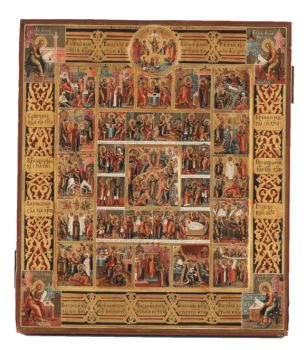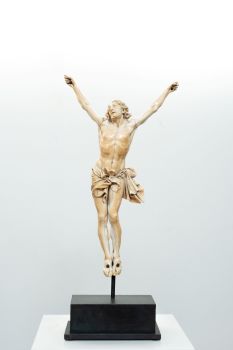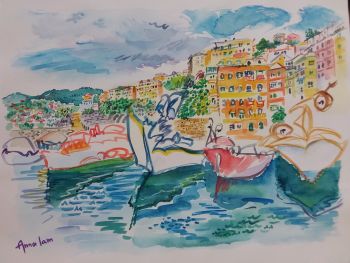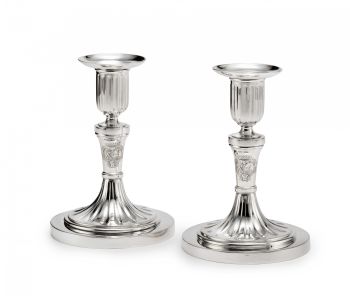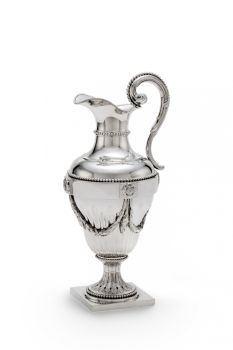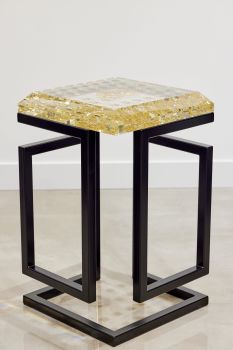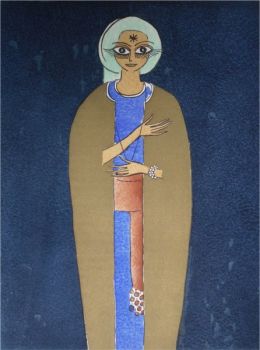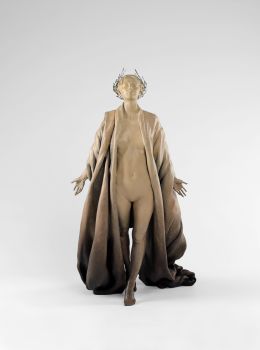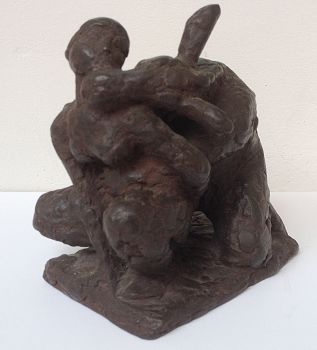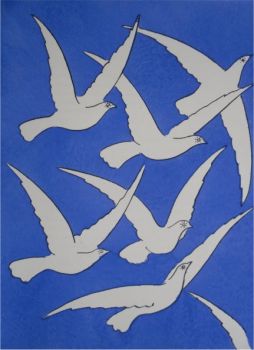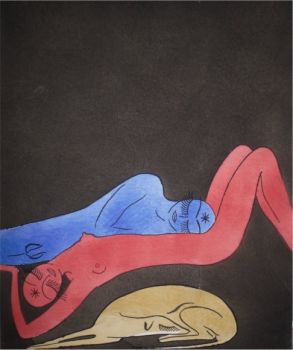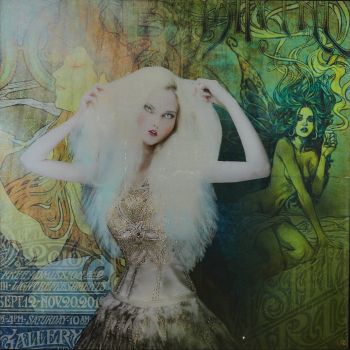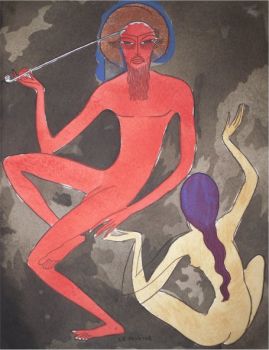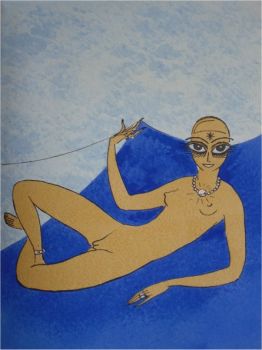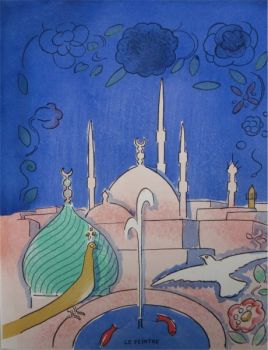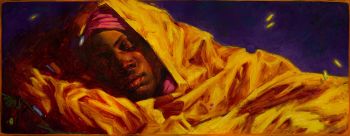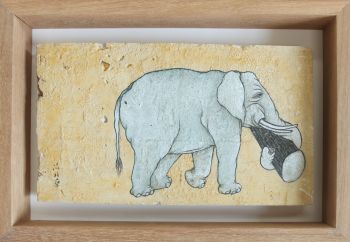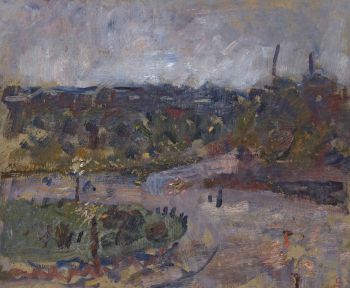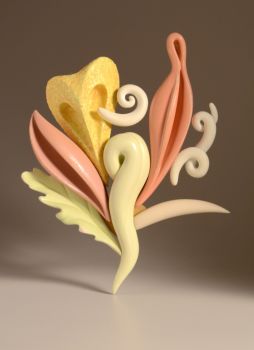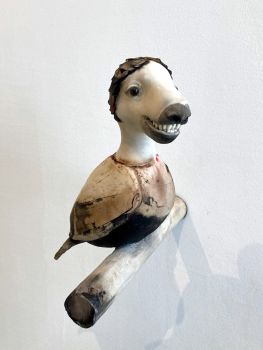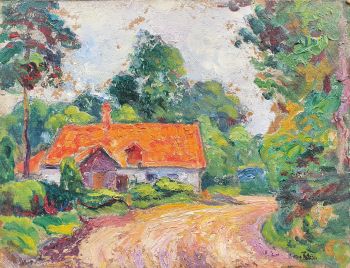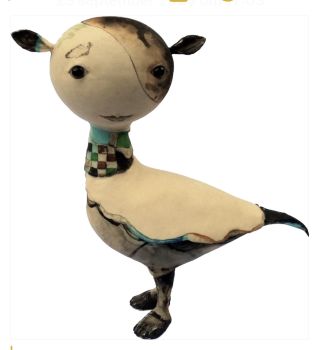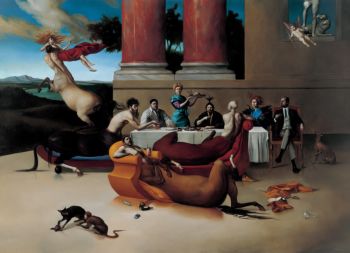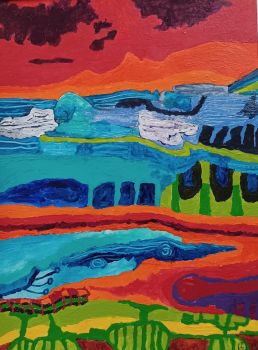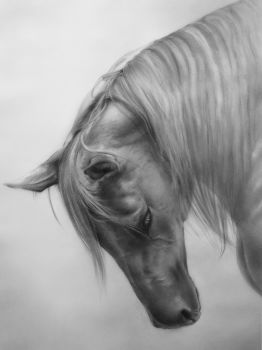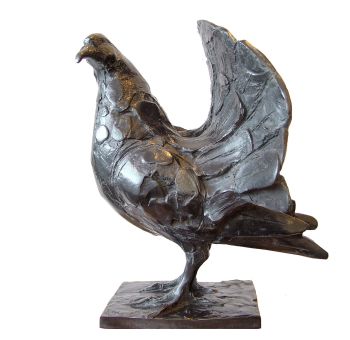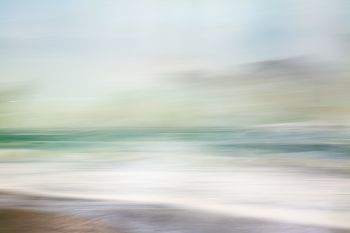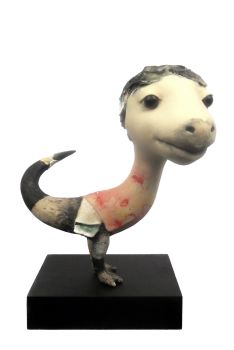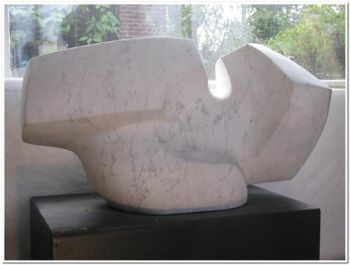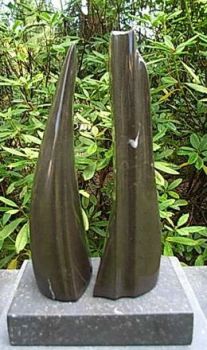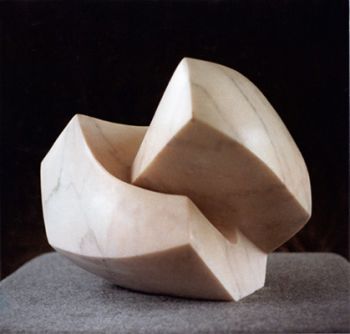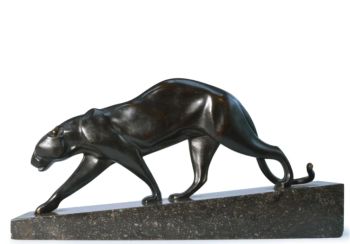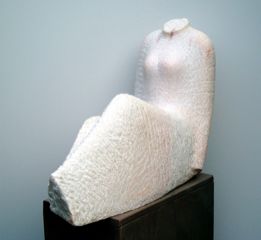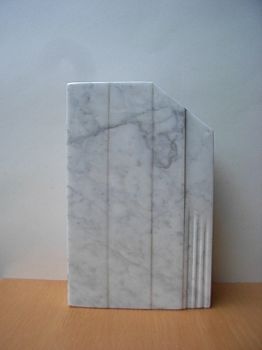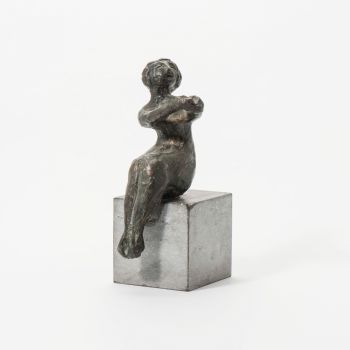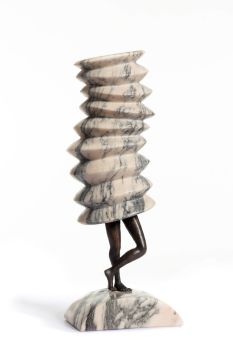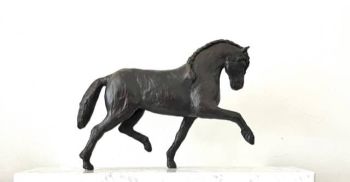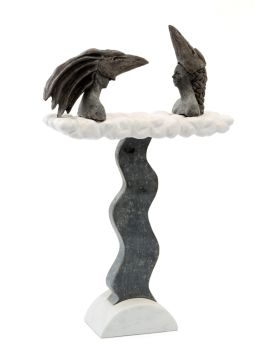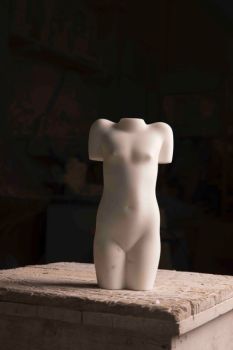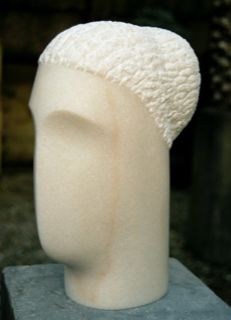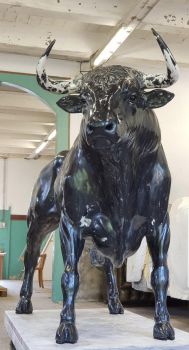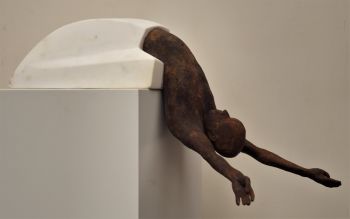Dutch Louis XVI Commode 1775
Onbekende Kunstenaar
EbbenhoutMarmerSteenHoutAmaranthGoudVerguldEdelsteen
91 ⨯ 129 ⨯ 60 cm
Momenteel niet beschikbaar via Gallerease
- Over kunstwerkThe commode was manufactured in the Louis XVI style. This piece of furniture has diagonally placed front styles and stands on tapered legs with button feet. The legs are decorated with small, also tapered fields with a motif of hanging flower buds. Above the legs are the styles decorated with faux flutes of lemon wood and bois teinté with narrow bands of ebony and boxwood. The diagonal corners-styles wear ormolu corner fittings in the form of a main frame, decorated with a garland of flowers.
The front of the chest shows a profiled projecting middle part, so a three-way division occurs with a wide middle flanked by two slightly smaller portions. The sides of the chest are flat.
The lower line shows on three sides between bands of rosewood a wide brim which is decorated with acanthus leaf in current-cat or wave motif. A gilt bronze skirt with a straight top, acanthus leaf and fluted consoles is installed in the centre. Although the front shows a trichotomy, the chest contains only two doors. Left a small door, right a wide door with hinges on two points: between the middle and the right side, and the far right. On the left of the door is the lock with a round ormolu key plate, hanging from a bow with hanging tassels. This part of the door shows left and right slightly concave curved frames, decorated with marquetry of an oval and a diamond motif hooked together against a backdrop of bois teinté. The decoration is surrounded by narrow bands of palm and ebony and encased in an edge of rosewood. The left list functions as a stroke list.
The interior contains a swiveled shelf, as in several Dutch chests - which may also have been used as a buffet - is found. On the bottom shelf one could put a basin with high a high ewer.
The chest is decorated with five fields marquetry work. All fields or "panels" are surrounded by bands of boxwood, ebony and sycamore with protruding corners. The middle field on the front is also enclosed in a border of cross entwined with laurel leaf rosettes in the salient angles. The edge is surrounded by rushes of palm, ebony and sycamore wood.
The panels on the left and right at the front were made after prints, Les trophees de Chasse, published in 1776 by Tardieu after a design of Charles Delafosse. - Over kunstenaar
Het kan voorkomen dat een kunstenaar of maker onbekend is.
Voor sommige werken is het niet te bepalen door wie het gemaakt is of dat het is gemaakt door (een groep) ambachtslieden. Voorbeelden zijn beelden uit de Oudheid, meubels, spiegels of handtekeningen die vaak niet duidelijk of leesbaar zijn. Maar ook sommige werken zijn helemaal niet gesigneerd.
Ook kunt u de volgende beschrijving vinden:
•"Toegeschreven aan …." waarschijnlijk een werk van de kunstenaar maar niet zeker of gedeeltelijk
•“Atelier van ….” of werkplaats van” een werk uitgevoerd in het atelier of atelier van de kunstenaar, eventueel onder zijn toezicht
•“Cirkel van ….” een werk uit de periode van de kunstenaar die zijn invloed laat zien, nauw verbonden met de kunstenaar maar niet noodzakelijkerwijs zijn leerling
•“Stijl van ….” of “Volger van ….” een werk uitgevoerd in de stijl van de kunstenaar, maar niet noodzakelijk door een leerling; kan eigentijds of bijna eigentijds zijn
•“Wijze van ….” een werk in de stijl van de kunstenaar maar van latere datum
•"Na …." een kopie (van welke datum dan ook) van een werk van de kunstenaar
•“Getekend…”, “Gedateerd….” of “Ingeschreven” dan is het werk gesigneerd/ gedateerd/ ingeschreven door de kunstenaar. De toevoeging van een vraagteken duidt op een element van twijfel
•"Met handtekening ...", "Met datum ...", "Met opschrift..." of “Draagt signatuur/datum/opschrift” dan is de handtekening/datum/opschrift toegevoegd door iemand anders dan de kunstenaar
Artwork details
Related artworks
Onbekende Kunstenaar
UITGEBREIDE FEESTDAGENIKOON MET PASSIECYCLUS19th century
Prijs op aanvraagHeutink Ikonen
1 - 4 / 12Reynier de Haan
An elegant Louis XVI Dutch Silver Monteith Bowl 1778
Prijs op aanvraagJacob J. Roosjen SRI
1 - 4 / 7Onbekende Kunstenaar
EEN COLLECTIE VAN VIER SRI LANKAANSE IVOREN BIJBEL DOZEN18th century
Prijs op aanvraagZebregs & Röell - Fine Art - Antiques
 Gecureerd door
Gecureerd doorDanny Bree
Onbekende Kunstenaar
EEN JAPANS MODEL VAN EEN NORIMONO, EEN DRAAGSTOEL1650 - 1700
Prijs op aanvraagZebregs & Röell - Fine Art - Antiques
Onbekende Kunstenaar
A rare Japanese export lacquer medical instrument box1650 - 1700
Prijs op aanvraagZebregs & Röell - Fine Art - Antiques
Onbekende Kunstenaar
EEN IVOREN NETSUKE VAN EEN NEDERLANDER MET EEN HAAN18th century
Prijs op aanvraagZebregs & Röell - Fine Art - Antiques
1 - 4 / 24- 1 - 4 / 24
Onbekende Kunstenaar
Set Franse Empire Pendules / Empire Lectura penduleearly 19th
Prijs op aanvraagKuipers Kunst & Antiek
1 - 4 / 24

